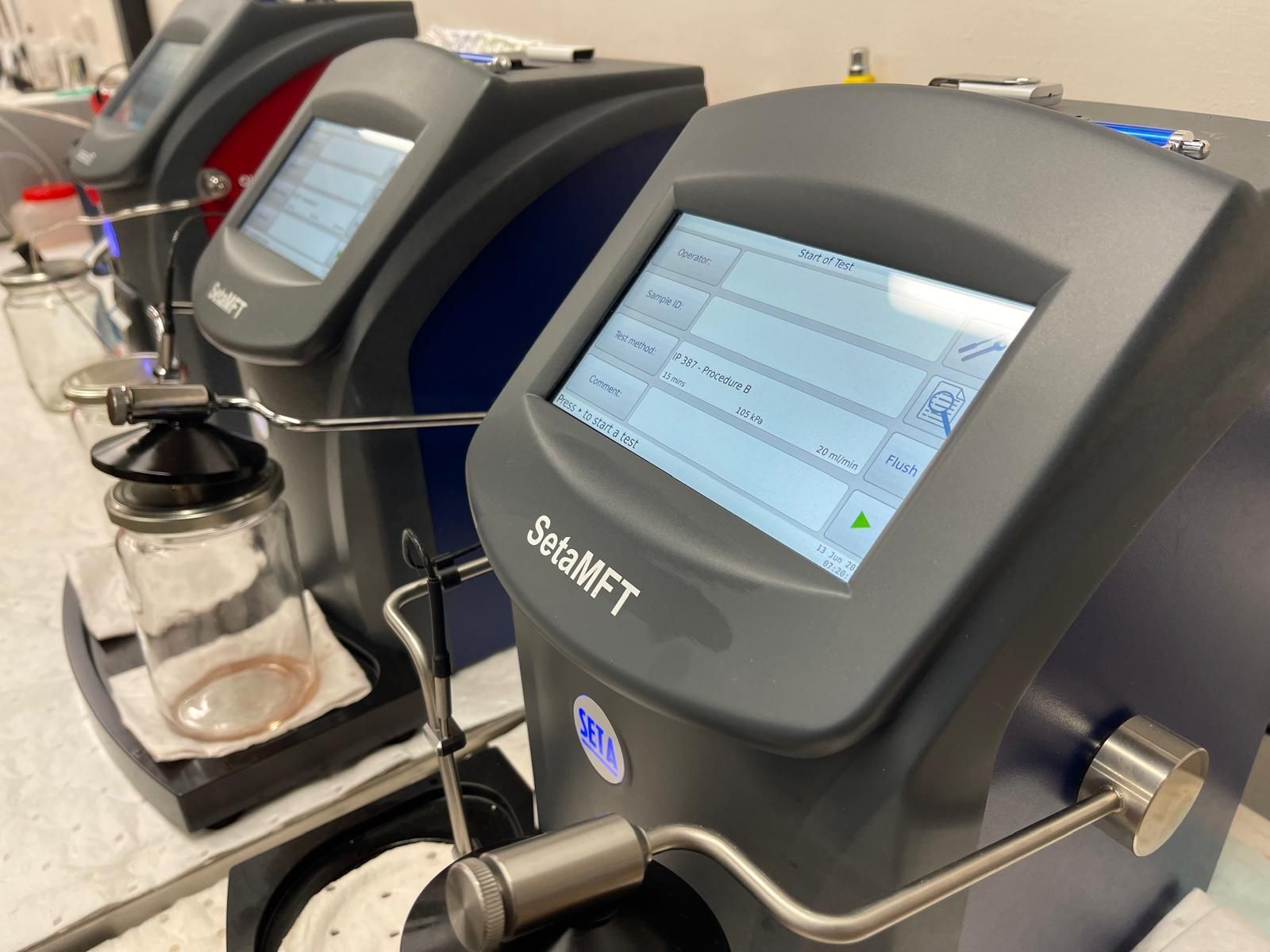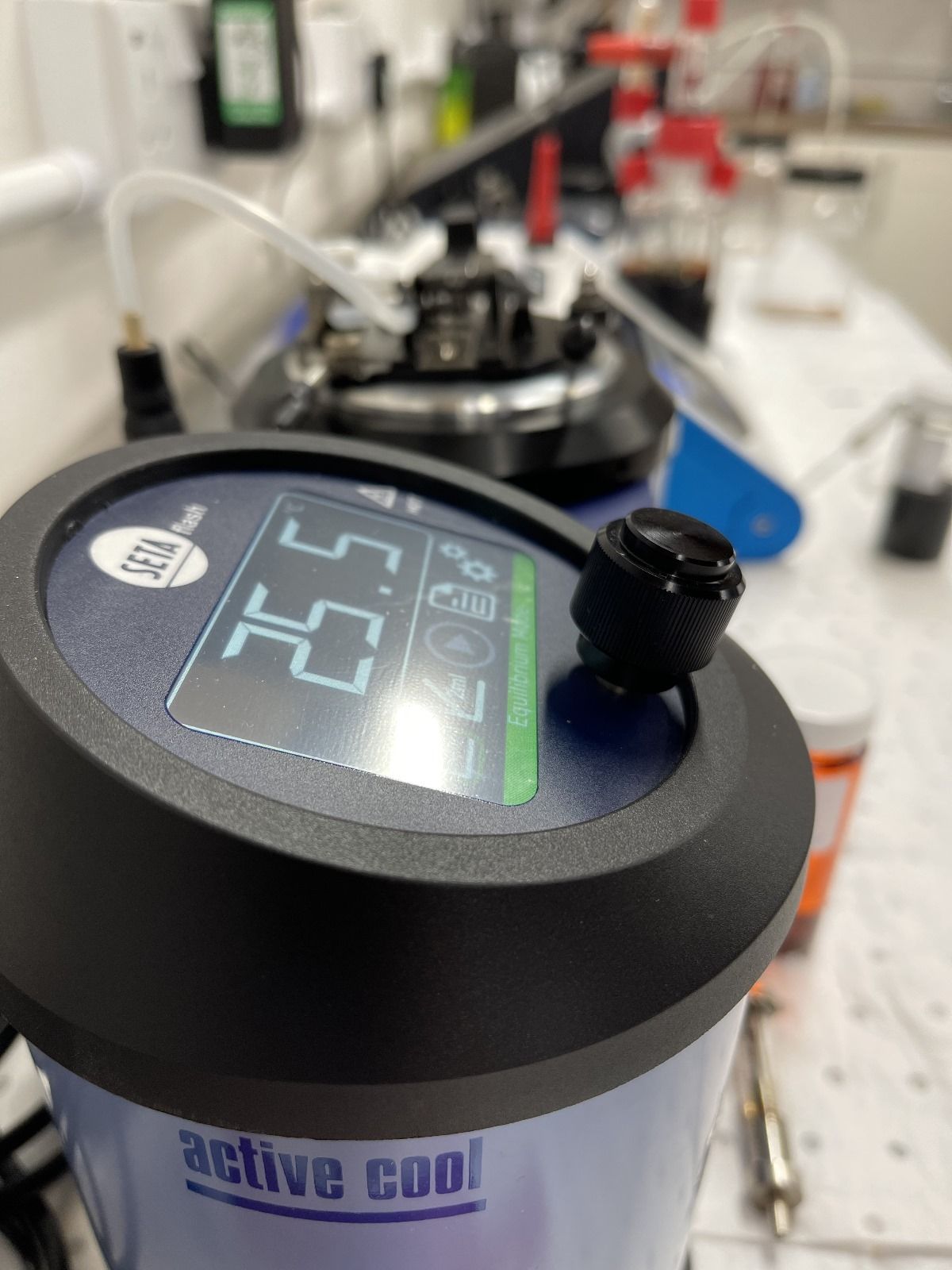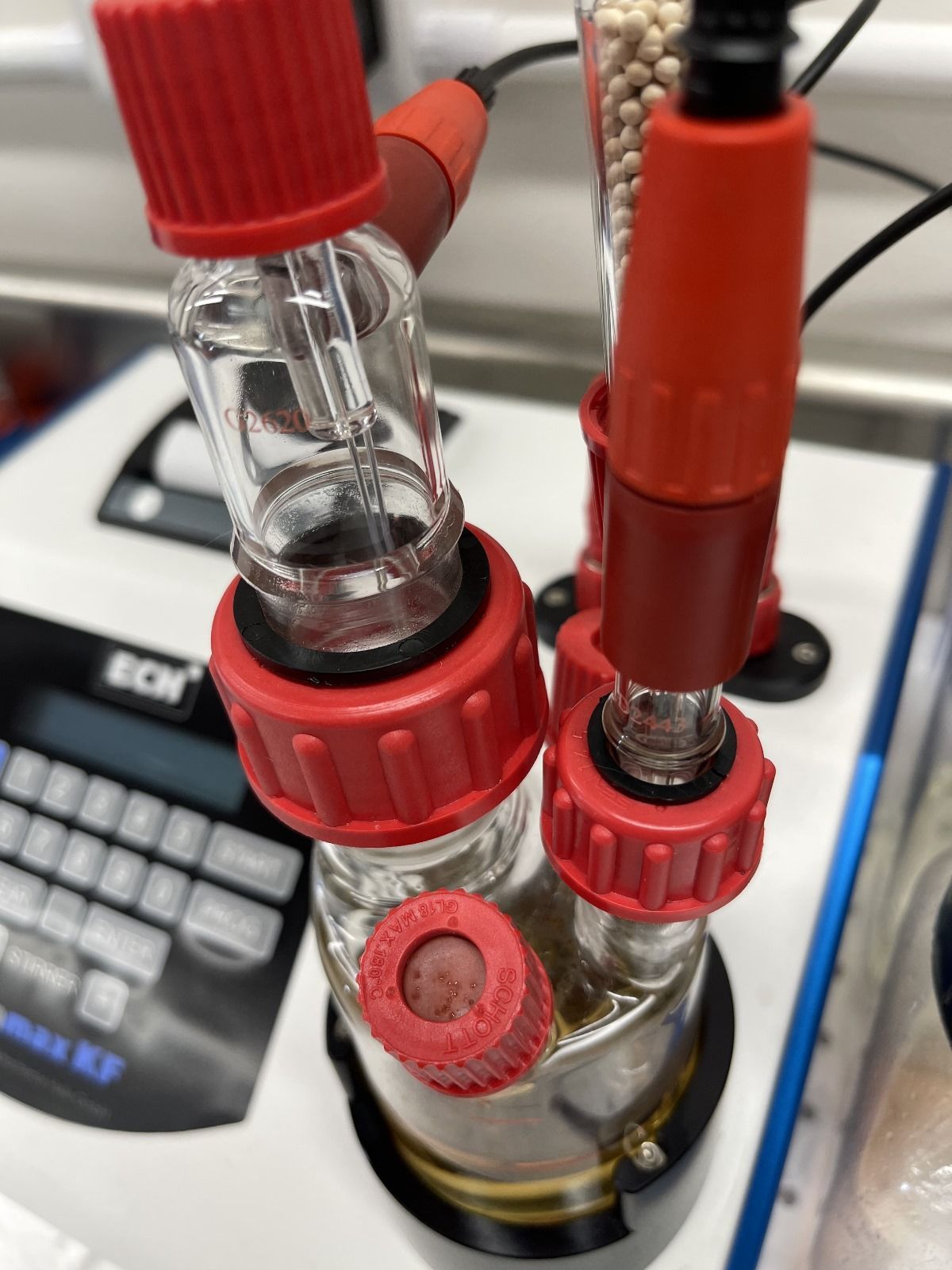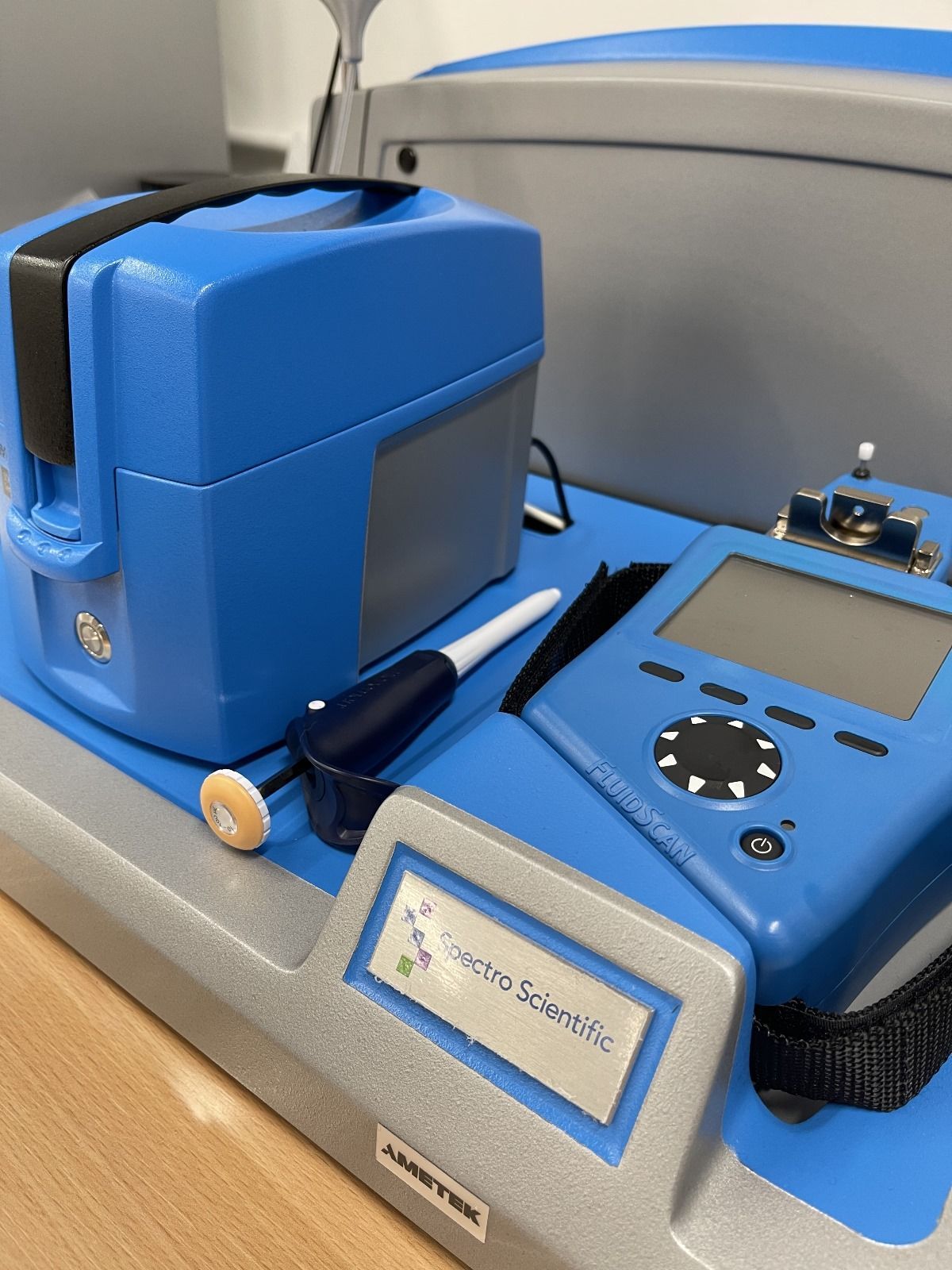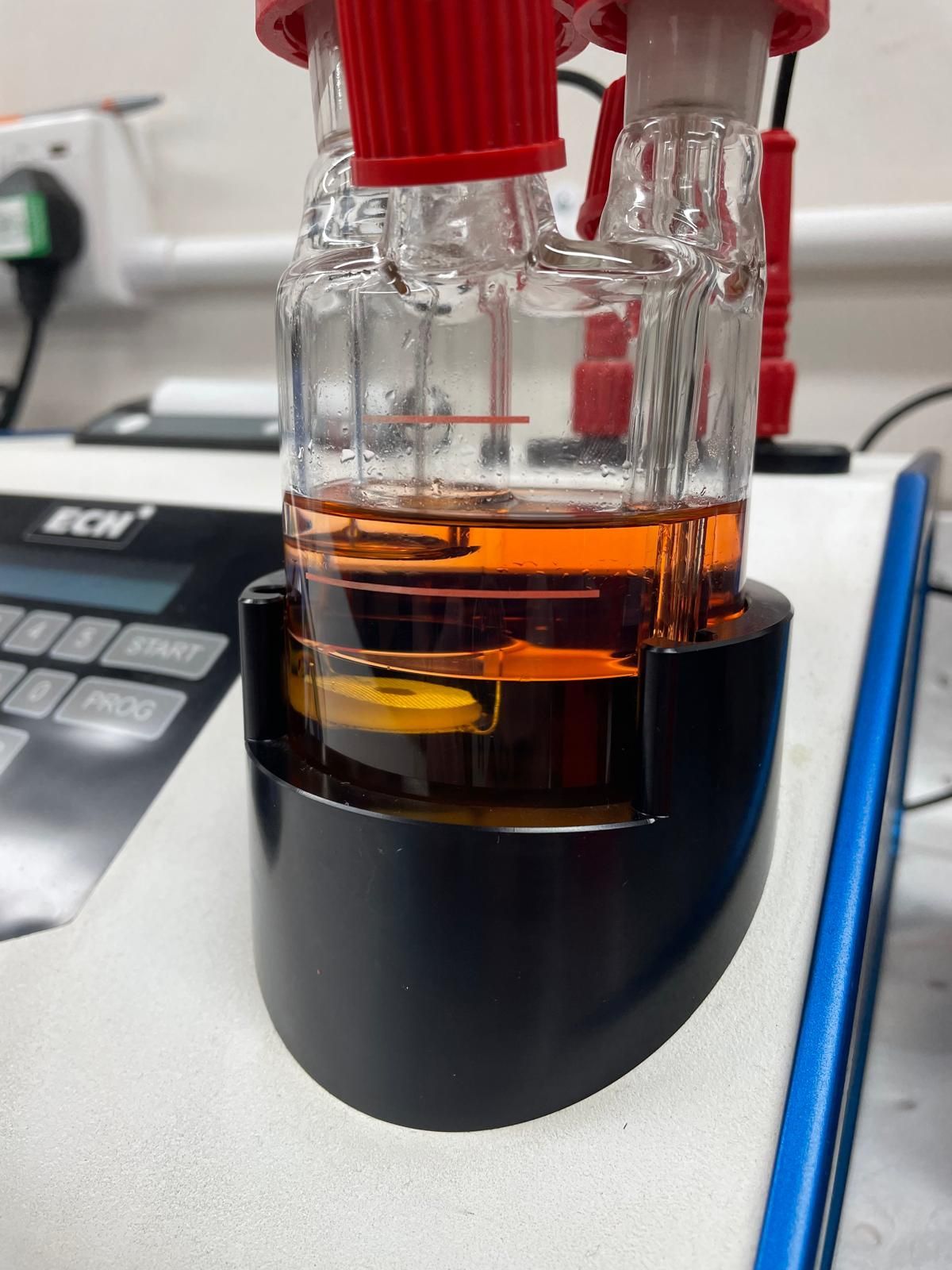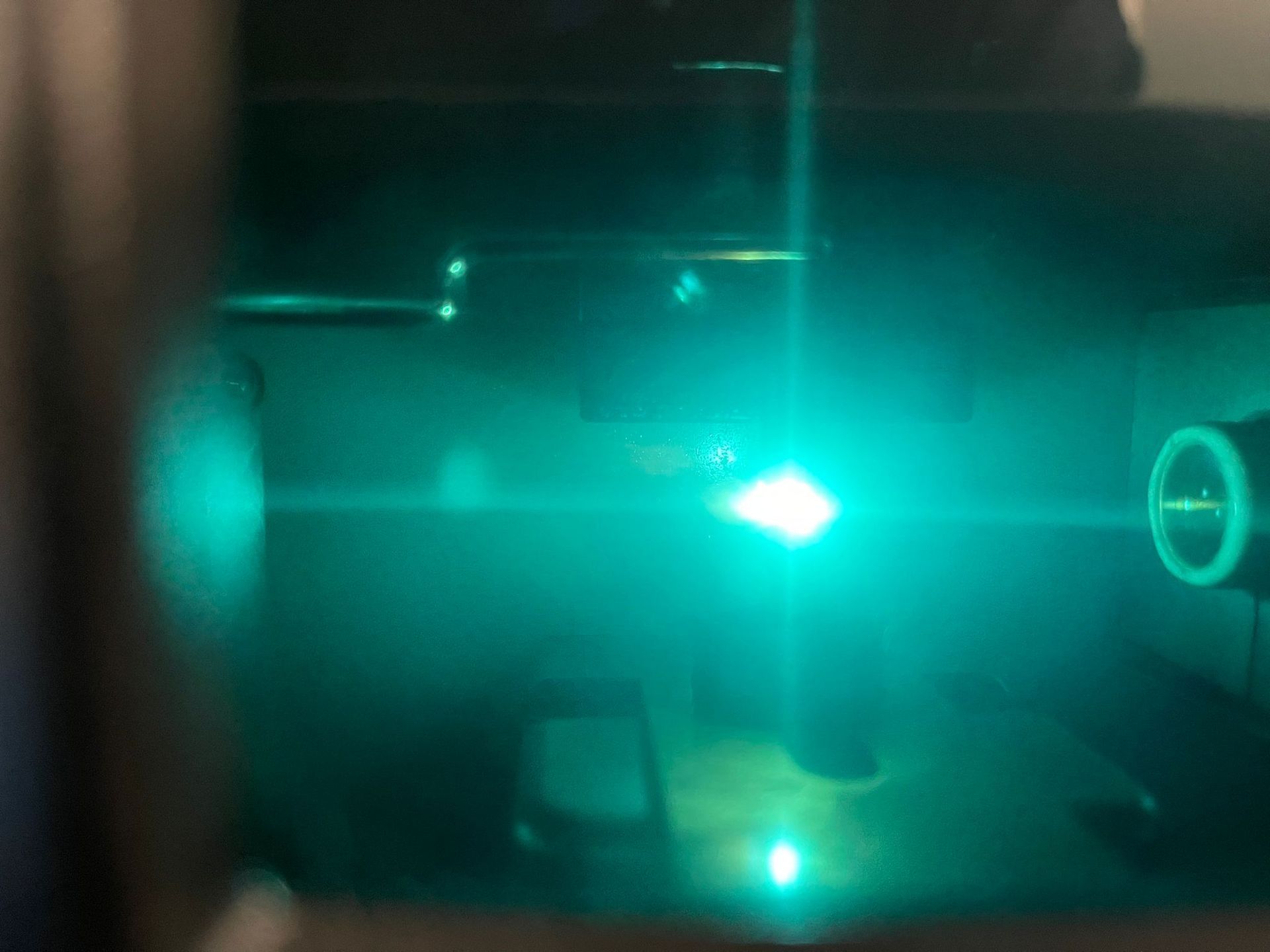We test & anaylse oil for contamination, chemistry, viscosity & wear so you or we can improve your oil
CFCS test parameters for performance fluids are categorised into the three components of the TriVector™. Wear parameters indicate the sources of mechanical breakdown within the equipment itself. Chemistry indicates the condition of the performance fluid itself. Contamination parameters indicate the source and level of foreign substance ingress.

"In an industry first, CFCS were instrumental in a Research and Development Project to enhance Lubricating oil analysis from a Landfill Gas Fuelled Generator. The enhanced service provided, gave analysis results the same day that the sample was provided, enabling decisions on oil condition to be taken immediately. Engine Lubricating oil is not normally tested to the level required by the project, CFCS developed and provided this service to Enovert throughout the project providing expert opinion on analysis findings."
Write your caption hereGraham Ball, Head of Landfill Gas, Enovert
"The reports we receive from CFCS are very detailed, precise, and clear, this also helps us explain the nature of the fuel issues our customers face."
Hall & Kay Fire Engineering
"H&K find using CFCS services very easy and the turn around on works is very quick which in the industry we are in, it is very much appreciated."
Hall & Kay Fire Engineering
IMPROVE YOUR OIL WITH...
Our In-House Oil Testing
CFCS performs in-house contamination, chemistry, viscosity and wear testing on performance fluids.
CONTAMINATION
Is the oil dry?
Is the oil clean/free of dirt?
CHEMISTRY & VISCOSITY
Is it the right oil?
Is the oil fit for use?
WEAR
Is the machine healthy?
Can I predict when the machinery will fail?
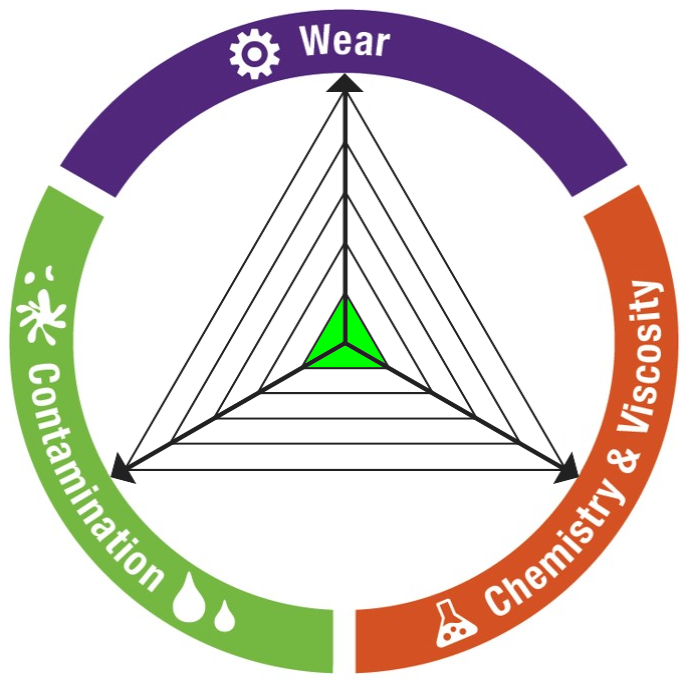
Why is oil testing important, and what can effect the quality of your oil?
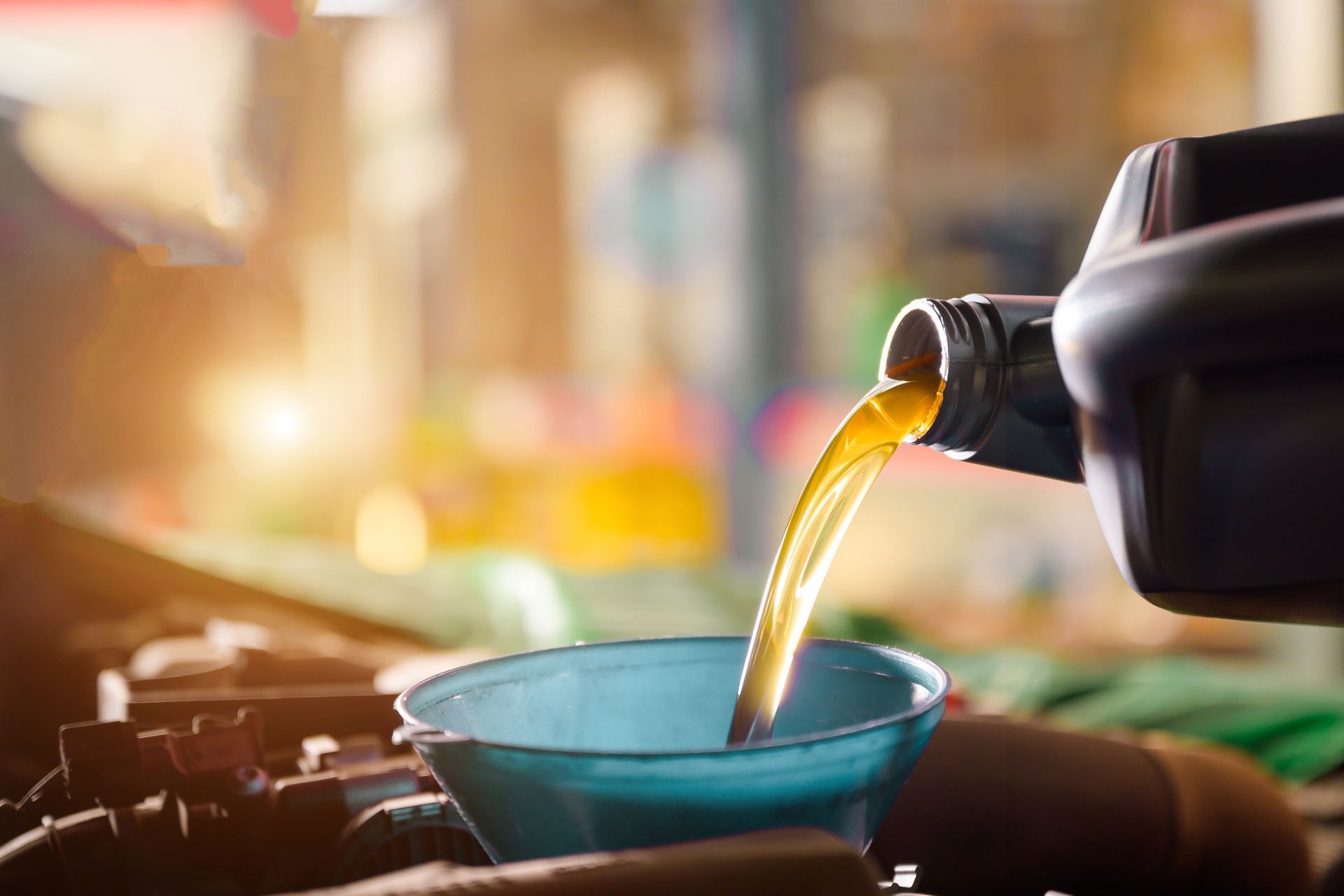
The CHEMISTRY & VISCOSITY is measured to find out if it is the right oil or if it is fit for use
OXIDATION — Oxidation of oil occurs in the presence of air (oxygen) and heat. The atmospheric oxygen reacts with the hydrocarbons in the lubricant to form carboxylic acids. These acids are weak, but given enough time the concentration can become high enough to cause severe corrosion of machinery parts. This is an inevitable process that must be monitored. To help protect the lubricant, antioxidant additives are included in almost all formulations. The additives will oxidize readily before the more important components of the oil will oxidize. Once these additives are depleted, the lubricant properties will be negatively affected. The oxidation rate varies greatly with temperature and is also affected by any contaminants (particularly metals) present in the lubricant, so keeping the oil clean, dry, and as cool as possible is the best way to manage oxidation. Find out more
SULFATION — The reaction between oxygen, heat, water and sulfur from diesel fuel or base oil can create sulfurous compounds including sulfur based acids. Most of the time these sulfurous compounds are expelled through exhaust, but some may remain and make their way into the engine cavity. Sulfation occurs when these acids react with either the additives in the oil or the base stock of the lubricant. At lower operating temperature, such as during start up, the acids can condense and more readily come into contact with the oil. Sulfation can cause increased viscosity and the formation of varnish, sludge, and sedimentation.
Total Acid Number (TAN) - TAN is measured to determine the corrosive potential of lubrication oils. If the TAN gets too high the oil can induce corrosion of machine parts and should be changed. Find out more
Viscosity - The main function of lubrication oil is to create and maintain a lubrication film between two moving metal surfaces. Insuring the viscosity is within recommended ranges is one of the most important tests one can run on lube oil. Find out more
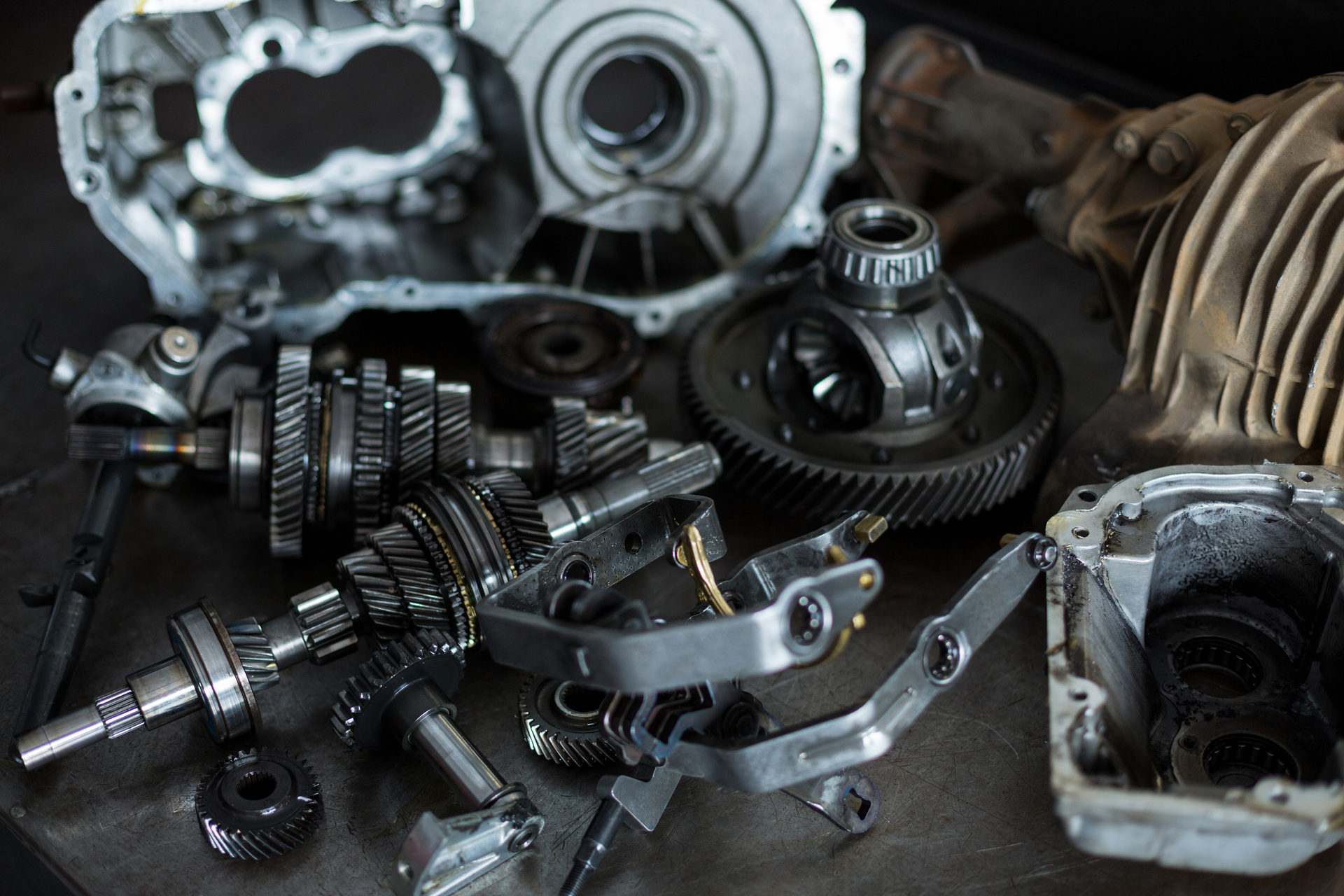
We test the WEAR to find out if the machine is healthy and when it is likely to fail
Particle Count - a high particle count or a rapid increase in particles can foreshadow an imminent failure. Find out more
Particle Composition - it is often important to understand the elemental composition of particles in order to find out where they came from. Optical Emission Spectroscopy gives the user elemental information.
Particle Type - The size, shape and opacity of particles is used to determine if they are from cutting wear, sliding wear, fatigue wear, nonmetallic or fibers. This allows operators to determine the type of wear debris, wear mode and potential source from internal machinery components.
Ferrous Wear - Ferrous wear measurement is a critical requirement for monitoring machine condition. The high sensitivity magnetometer measures and reports ferrous content in ppm/ml, and provides ferrous particle count and size distribution for large ferrous particles. Find out more

We test oil for CONTAMINATION to find out if it is dry and clean/free of dirt
WATER
Water contamination in industrial oils can cause severe issues with machinery components. The presence of water can alter the viscosity of a lubricant as well as cause chemical changes resulting in additive depletion and the formation of acids, sludge, and varnish. Find out more
SOOT
Since no engine is 100% efficient, products other than carbon dioxide and water will be formed during combustion. One such product produced from incomplete combustion is soot. Soot is a mass of mainly carbon particles that are typically spherical in shape. As soot levels rise, the soot particles begin to clump together and become more dangerous. The soot levels will continue to increase and the particles clump together until it reaches a level great enough to precipitate out of the oil. This precipitation will both increase the viscosity of the oil and attach itself to the engine surfaces which will significantly increase wear on the engine. This precipitation can also lead to filter plugging. Find out more
FUEL DILUTION
Fuel dilution in oil can cause serious engine damage. High levels of fuel (>2%) in a lubricant can result in decreased viscosity, oil degradation, loss of dispersancy, and loss of oxidation stability. Fuel dilution is one of the most important lubricant failure modes in internal combustion engines. It usually occurs due to improper fuel-to-air ratio. Fuel dilution can also occur due to excessive idling, piston ring wear, or defective injectors and loose connectors. Find out more
GLYCOL COOLANTS
Glycol coolants break down in the high temperature engine environment, leading to formation of glycolic acids. These acids attack nonferrous bearing surfaces and form metal salts. The acids also react with the oil anti wear and anti oxidant additives and, along with water, create sludges that plug filters and cause the oil to lose its lubricity properties, thus increasing abrasive wear. Glycol contamination in engines and transmissions is considered to be a more severe contaminant than water alone (up to 10 times more damaging). Depending on the oil temperature, the glycol coolant may break down rapidly or over time. This instability is a major challenge for determining the true glycol content in the oil at a given time, and is the major reason why field and lab tests often do not agree with each other. Find out more

The CHEMISTRY & VISCOSITY is measured to find out if it is the right oil or if it is fit for use
OXIDATION — Oxidation of oil occurs in the presence of air (oxygen) and heat. The atmospheric oxygen reacts with the hydrocarbons in the lubricant to form carboxylic acids. These acids are weak, but given enough time the concentration can become high enough to cause severe corrosion of machinery parts. This is an inevitable process that must be monitored. To help protect the lubricant, antioxidant additives are included in almost all formulations. The additives will oxidize readily before the more important components of the oil will oxidize. Once these additives are depleted, the lubricant properties will be negatively affected. The oxidation rate varies greatly with temperature and is also affected by any contaminants (particularly metals) present in the lubricant, so keeping the oil clean, dry, and as cool as possible is the best way to manage oxidation. Find out more
SULFATION — The reaction between oxygen, heat, water and sulfur from diesel fuel or base oil can create sulfurous compounds including sulfur based acids. Most of the time these sulfurous compounds are expelled through exhaust, but some may remain and make their way into the engine cavity. Sulfation occurs when these acids react with either the additives in the oil or the base stock of the lubricant. At lower operating temperature, such as during start up, the acids can condense and more readily come into contact with the oil. Sulfation can cause increased viscosity and the formation of varnish, sludge, and sedimentation.
Total Acid Number (TAN) - TAN is measured to determine the corrosive potential of lubrication oils. If the TAN gets too high the oil can induce corrosion of machine parts and should be changed. Find out more
Viscosity - The main function of lubrication oil is to create and maintain a lubrication film between two moving metal surfaces. Insuring the viscosity is within recommended ranges is one of the most important tests one can run on lube oil. Find out more

We test the WEAR to find out if the machine is healthy and when it is likely to fail
Particle Count - a high particle count or a rapid increase in particles can foreshadow an imminent failure. Find out more
Particle Composition - it is often important to understand the elemental composition of particles in order to find out where they came from. Optical Emission Spectroscopy gives the user elemental information.
Particle Type - The size, shape and opacity of particles is used to determine if they are from cutting wear, sliding wear, fatigue wear, nonmetallic or fibers. This allows operators to determine the type of wear debris, wear mode and potential source from internal machinery components.
Ferrous Wear - Ferrous wear measurement is a critical requirement for monitoring machine condition. The high sensitivity magnetometer measures and reports ferrous content in ppm/ml, and provides ferrous particle count and size distribution for large ferrous particles. Find out more

We test oil for CONTAMINATION to find out if it is dry and clean/free of dirt
WATER
Water contamination in industrial oils can cause severe issues with machinery components. The presence of water can alter the viscosity of a lubricant as well as cause chemical changes resulting in additive depletion and the formation of acids, sludge, and varnish. Find out more
SOOT
Since no engine is 100% efficient, products other than carbon dioxide and water will be formed during combustion. One such product produced from incomplete combustion is soot. Soot is a mass of mainly carbon particles that are typically spherical in shape. As soot levels rise, the soot particles begin to clump together and become more dangerous. The soot levels will continue to increase and the particles clump together until it reaches a level great enough to precipitate out of the oil. This precipitation will both increase the viscosity of the oil and attach itself to the engine surfaces which will significantly increase wear on the engine. This precipitation can also lead to filter plugging. Find out more
FUEL DILUTION
Fuel dilution in oil can cause serious engine damage. High levels of fuel (>2%) in a lubricant can result in decreased viscosity, oil degradation, loss of dispersancy, and loss of oxidation stability. Fuel dilution is one of the most important lubricant failure modes in internal combustion engines. It usually occurs due to improper fuel-to-air ratio. Fuel dilution can also occur due to excessive idling, piston ring wear, or defective injectors and loose connectors. Find out more
GLYCOL COOLANTS
Glycol coolants break down in the high temperature engine environment, leading to formation of glycolic acids. These acids attack nonferrous bearing surfaces and form metal salts. The acids also react with the oil anti wear and anti oxidant additives and, along with water, create sludges that plug filters and cause the oil to lose its lubricity properties, thus increasing abrasive wear. Glycol contamination in engines and transmissions is considered to be a more severe contaminant than water alone (up to 10 times more damaging). Depending on the oil temperature, the glycol coolant may break down rapidly or over time. This instability is a major challenge for determining the true glycol content in the oil at a given time, and is the major reason why field and lab tests often do not agree with each other. Find out more
CFCS Standards of Measurement
List of Services
-
Spectroil Q100Item Link List Item 1
The Spectroil Q100 meets the requirements of ASTM D6595 for the determination of wear metals, additives and contaminants in used Lubricating oils or hydraulics fluids by rotating disc electrode atomic emission spectrometry. It also meets ASTM D6728 for Alkali contaminants in fuels.
-
Lasernet 200Item Link List Item 2
Lasernet 200 series Particle counter, Ferrous monitor, and wear classifier
-
Particle cleanliness codesItem Link List Item 3
Particle cleanliness codes, such as ISO 4406 and ASTM D6786, indicate the overall cleanliness of the oil
-
Ferrous Wear Severity Index Write a description for this list item and include information that will interest site visitors. For example, you may want to describe a team member's experience, what makes a product special, or a unique service that you offer.
Item Link List Item 4 -
Count of large cutting etcItem Link
Count of large cutting, sliding and fatigue wear, along with non-metallic particles, indicates the source of the particles
-
Complies with ASTM D7596Item Link
Complies with ASTM D7596 - Standard Test Method for Automatic Particle Counting and Particle Shape Classification of Oils Using a Direct Imaging Integrated Tester
-
Particle count, size distribution and codes Write a description for this list item and include information that will interest site visitors. For example, you may want to describe a team member's experience, what makes a product special, or a unique service that you offer.
Item Link -
Total ferrous concentrationItem Link
Total ferrous concentration per ASTM D8120
-
Reports large Ferrous concentration Write a description for this list item and include information that will interest site visitors. For example, you may want to describe a team member's experience, what makes a product special, or a unique service that you offer.
Item Link -
Detects ferrous particles Write a description for this list item and include information that will interest site visitors. For example, you may want to describe a team member's experience, what makes a product special, or a unique service that you offer.
Item Link -
Fluid Condition using IR Spectroscopy Write a description for this list item and include information that will interest site visitors. For example, you may want to describe a team member's experience, what makes a product special, or a unique service that you offer.
Item Link -
Kinematic Viscometer compliantItem Link
Kinematic Viscometer compliant to ASTM D8092 test method


